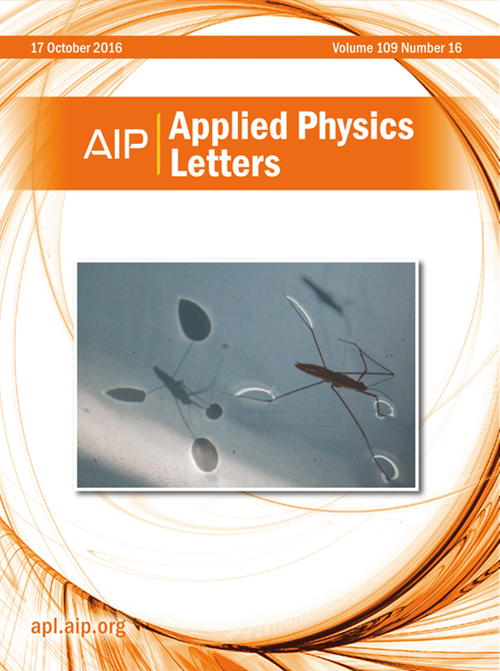Megahertz cycling of ultrafast structural dynamics enabled by nanosecond thermal dissipation
IF 3.5
2区 物理与天体物理
Q2 PHYSICS, APPLIED
引用次数: 0
Abstract
Light–matter interactions are of fundamental scientific and technological interest. Ultrafast electron microscopy and diffraction with combined femtosecond-nanometer resolution elucidate the laser-induced dynamics in structurally heterogeneous systems. These measurements, however, remain challenging due to the brightness limitation of pulsed electron sources, leading to an experimental trade-off between resolution and contrast. Larger signals can most directly be obtained by higher repetition rates, which, however, are typically limited to a few kilohertz by the thermal relaxation of thin material films. Here, we combine nanometric electron beam probing with sample support structures tailored to facilitate rapid specimen cooling. Optical cycling of a charge-density wave transformation enables quantifying the mean temperature increase induced by pulsed laser illumination. Varying the excitation fluence and repetition rate, we gauge the impact of excitation confinement and efficient dissipation on the heat diffusion in different sample designs. In particular, a thermally optimized support can dissipate average laser intensities of up to 200 μW/μm2 within a few nanoseconds, allowing for reversible driving and probing of the CDW transition at a repetition rate of 2 MHz. Sample designs tailored to ultrafast measurement schemes will thus extend the capabilities of electron diffraction and microscopy, enabling high-resolution investigations of structural dynamics.求助全文
约1分钟内获得全文
求助全文
来源期刊

Applied Physics Letters
物理-物理:应用
CiteScore
6.40
自引率
10.00%
发文量
1821
审稿时长
1.6 months
期刊介绍:
Applied Physics Letters (APL) features concise, up-to-date reports on significant new findings in applied physics. Emphasizing rapid dissemination of key data and new physical insights, APL offers prompt publication of new experimental and theoretical papers reporting applications of physics phenomena to all branches of science, engineering, and modern technology.
In addition to regular articles, the journal also publishes invited Fast Track, Perspectives, and in-depth Editorials which report on cutting-edge areas in applied physics.
APL Perspectives are forward-looking invited letters which highlight recent developments or discoveries. Emphasis is placed on very recent developments, potentially disruptive technologies, open questions and possible solutions. They also include a mini-roadmap detailing where the community should direct efforts in order for the phenomena to be viable for application and the challenges associated with meeting that performance threshold. Perspectives are characterized by personal viewpoints and opinions of recognized experts in the field.
Fast Track articles are invited original research articles that report results that are particularly novel and important or provide a significant advancement in an emerging field. Because of the urgency and scientific importance of the work, the peer review process is accelerated. If, during the review process, it becomes apparent that the paper does not meet the Fast Track criterion, it is returned to a normal track.
 求助内容:
求助内容: 应助结果提醒方式:
应助结果提醒方式:


